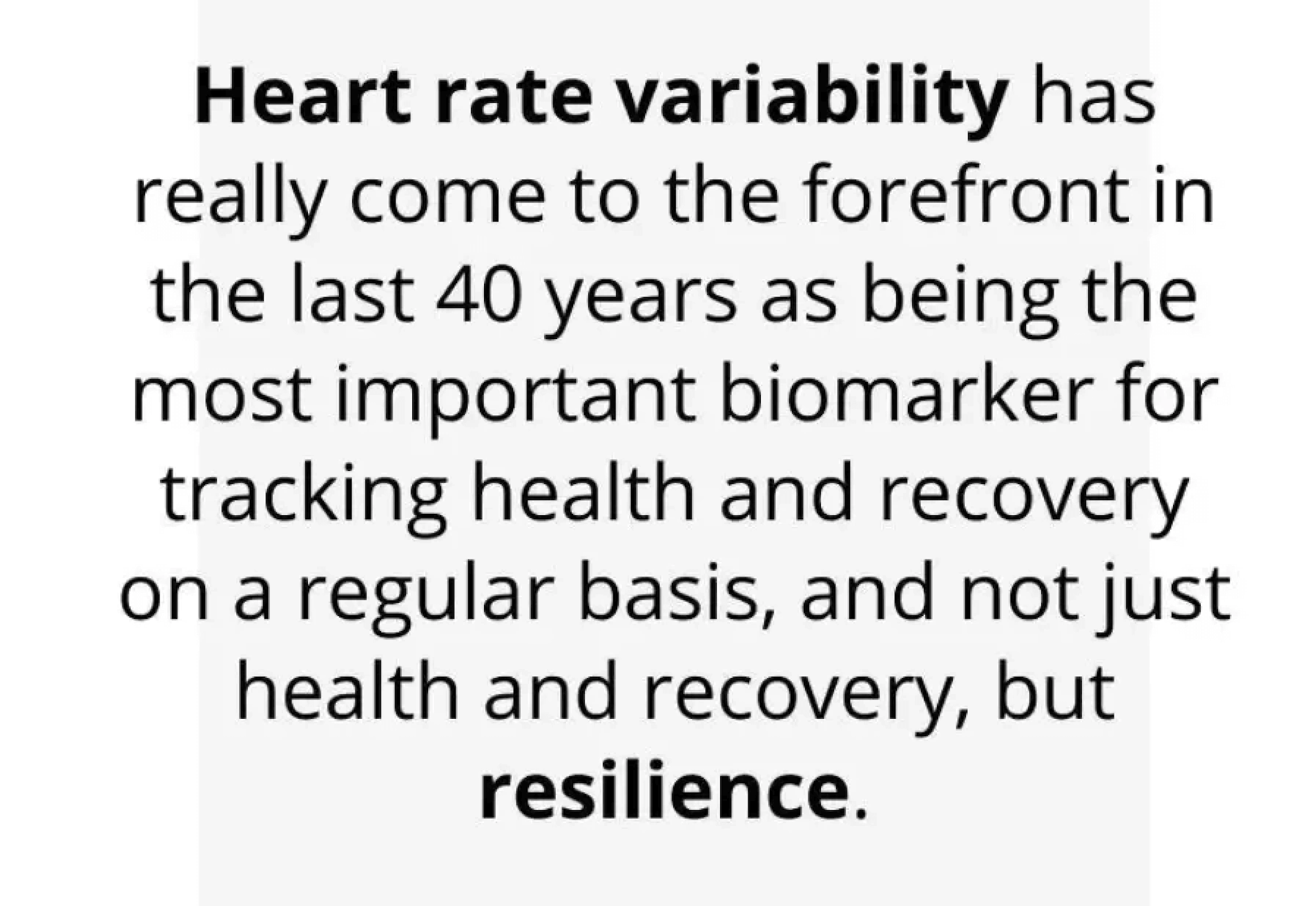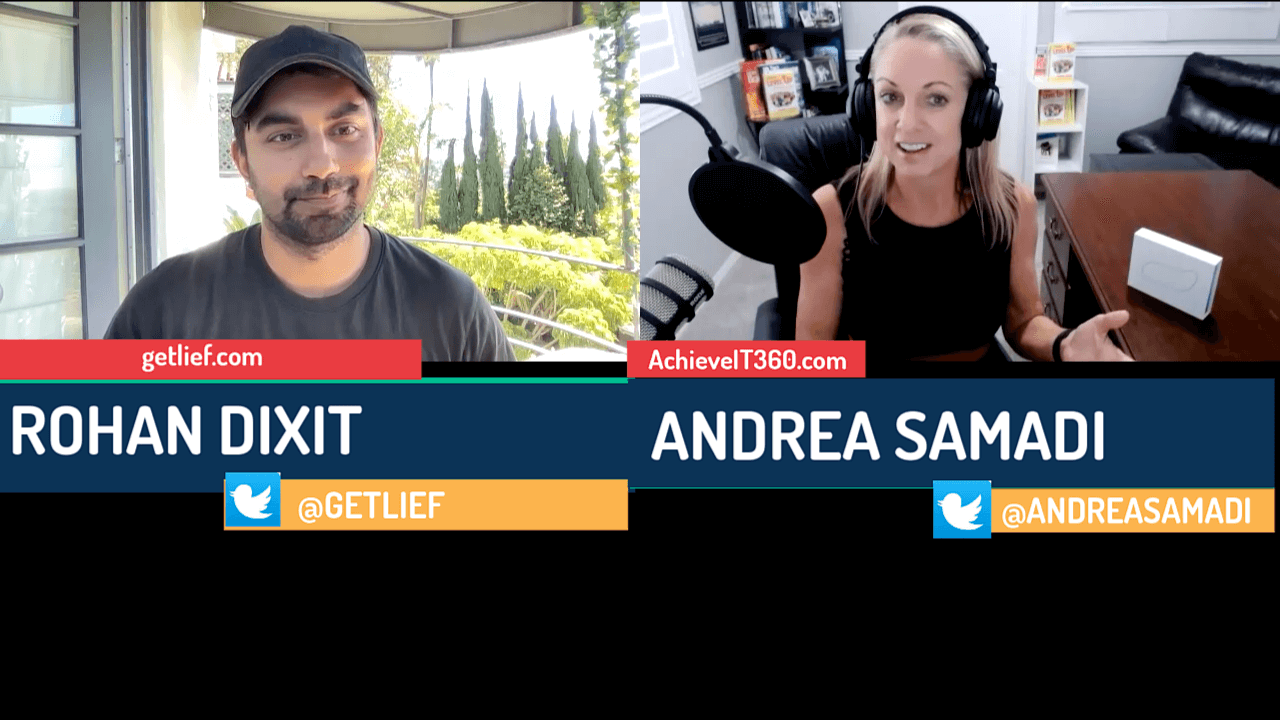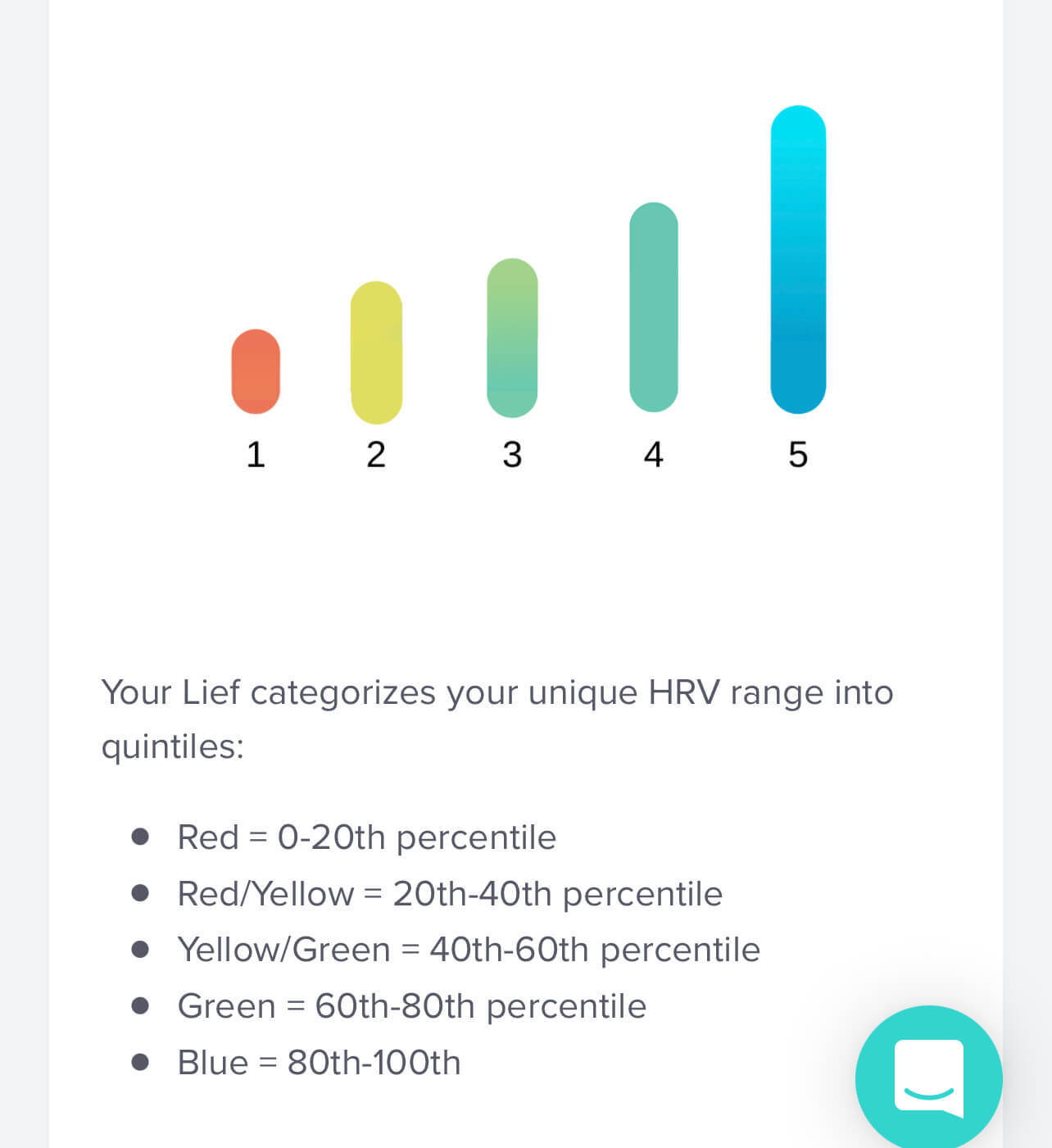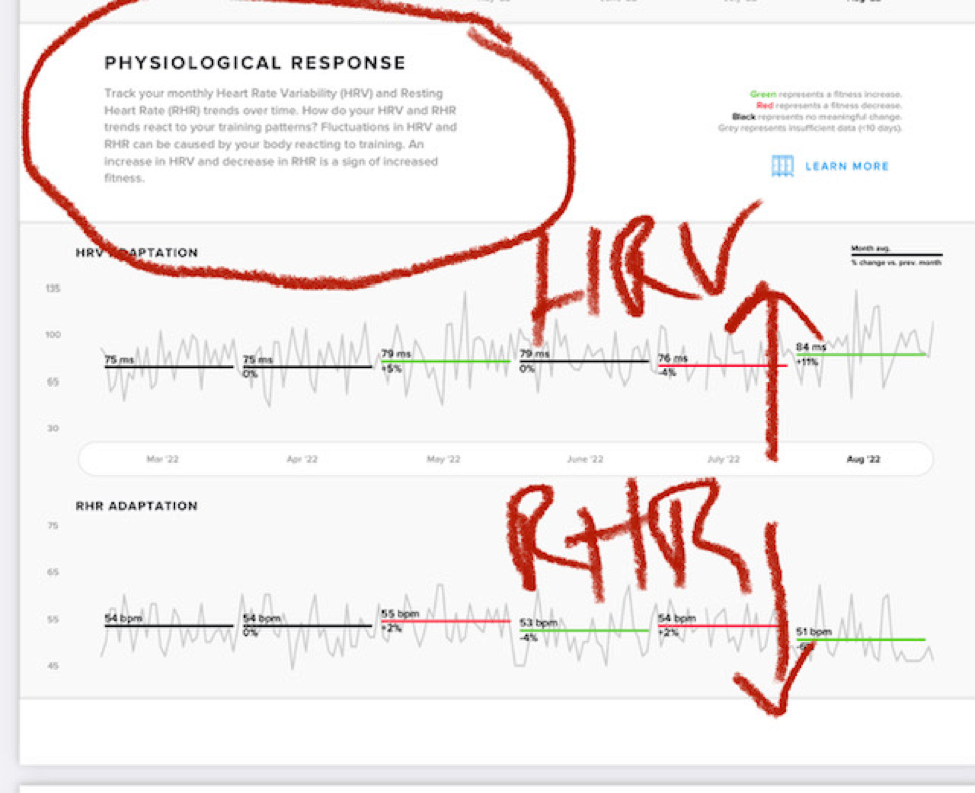"Heart rate variability has really come to the forefront in the last 40 years as being the most important biomarker for tracking health and recovery on a regular basis, and not just health and recovery, but resilience." (Neurohacker Collective)

Watch this interview here on YouTube: https://youtu.be/8wbt2o-lO1I

It’s something we’ve covered on past episodes[i] including our most recent EP #228 where we reviewed Heart Rate Variability, what it is, why it’s important to track, with tips to increase it, for increased capacity throughout our day.
On this episode we will learn:
✔ How Rohan Dixit created a wearable device for stress relief, based on his own personal struggles.
✔ The ONE THING that most of us are missing when it comes to improving our mental health and well-being.
✔ How Rohan came across HRV in his research and why as a neuroscientist he looked outside of the brain for a solution for our mental health and well-being.
✔ REVIEW: What is HRV and why it is an important biomarker to measure.
✔ Why tracking HRV in real-time helpful for our mental well-being.
✔ How we can all improve our stress levels by looking at our data.
✔ What is biofeedback and how does it work?
✔ The most common ways to decrease our HRV, that we should all be aware of.
✔ The research behind HRV as a drug-free solution to stress and anxiety reduction.
✔ How to get started and receive 15% off your first month using the code ANDREA.
NOW IMAGINE THIS! What if you could see your HRV in real time throughout the day, so you know what’s helping this important score, or hurting it? We will cover this on today’s episode as we meet with Rohan Dixit, the founder of Lief Therapeutics (a wearable stress relief device) that’s designed to help us to overcome stress and worry from the inside out. Stay tuned and we’ll explain how this ground-breaking device can help ALL OF US to improve our health, as we learn self-regulation strategies using the device, that will eventually become a habit, showing us how to break free of anything that might be holding us back.
Welcome back to The Neuroscience Meets Social and Emotional Learning Podcast, where we cover the science-based evidence behind social and emotional learning (for schools) and emotional intelligence training (in the workplace) with tools, ideas and strategies that we can all use for immediate results, with our brain in mind. I’m Andrea Samadi, an author, and educator with a passion for learning specifically on the topics of health, wellbeing and productivity, and launched this podcast to share how important an understanding of our brain is to our everyday life and results using the most current brain research. If there’s a tool, strategy or resource that I find, that could be helpful to improve productivity and results, whether we are a teacher in the classroom, a coach or in the modern workplace, I will share it here.
On today’s episode #248, we will be speaking with Rohan Dixit, the founder of Lief Therapeutics, to see if we can sharpen our saw with our understanding of HRV, a biomarker that’s known for tracking health and recovery as well as resilience. What I think is absolutely incredible with this wearable stress relief device, is that you’ll see that the point of wearing this device, is to train us to breathe in a certain way to relieve our stress, anxiety and worry (that it will pick up) and then help to calm us down, so we won’t need to rely of the device.
Rohan’s mission is not about the money he could make with the device, but truly about helping people to be able to manage their own problems, without the use of medicine, or pills, or those things we do that we know relieve stress in the short term, but are bad for our overall health in the long term. I can’t wait to speak with Rohan Dixit, and explore the technology he created in his garage, (he’s a real Steve Jobs story) and the idea was based on his own personal struggles with anxiety and depression when he was younger, that he overcame, and then used his experience to help others. Let’s meet Rohan Dixit, the founder of Lief Therapeutics, and see how this device works, to improve our mental health and wellbeing from the inside out.
Welcome Rohan, it’s incredible to meet you after wearing the device you invented and now I have this incredible opportunity to ask YOU questions about it. This is amazing. Thank you for joining me today.
I’m wearing mine today, and curious, do you wear yours every day or have you gotten the point to where you can self-regulate without it?
INTRO: To start off, Rohan, I had a blast researching your work, and am so glad I listened to you on The Abstract Doctors Podcast[ii] because I tend to more on the serious side, and could lighten up my interviews to make them more fun/less stressful and as I was learning more about you, I was dying laughing with these two doctors covering your Lief Device. They were asking why it’s called Lief, and they were guessing “it’s about turning over a new leaf?” Why is it called Lief?
Then I watched your clip of the Today Show[iii] with Hoda and Savanna trying out your device, and I thought, wow, I take learning and this podcast a bit too seriously because they were having such a good time investing the high stress parts of their day. Since you are an expert at helping people relieve stress, I wonder what tips you would have for me or anyone else these days who spends most of their day sitting at a desk? What are most of us missing that could help us handle life’s pressures/stresses better?
Q1: I know there has to be a story here of how you came to be the founder of Lief Therapeutics that is focused on helping people to overcome stress and worry from the inside out. Where did this begin for you?
Q2: Where did you come across HRV, and is there really a story like Steve Jobs where you started this whole idea in your garage?
Q3: Can you give me YOUR definition of HRV for the lay person who is tuning in, and has no idea what it is? (We have talked about it often on this podcast but I recently reviewed it when I became stuck explaining it to someone else).
Q4: Tracking HRV in real time is such an incredible idea. I track with a device that gives me a daily score and I wake up dying to see my score, hoping for improvements as I’m working on certain strategies. Why would someone need to know their HRV levels throughout certain parts of their day? How does this help them? I think I heard you say this knowledge is like our “superpower!” What do you mean by that?
Q4B: Is the strap for athletes who might need to measure their HRV during play?
Q5: So I wrote your questions BEFORE trying out the device and wanted to add a snapshot of my work day, to see what you see with my bar graph. I had an important LIVE presentation on Monday morning that I practiced all weekend for, and wore the Lief device thinking it would show how calm I was under pressure. Then the unexpected happened and I had 2 major unforeseen tech issues that really threw me off. I’d like to know If you look at my Monday morning, what do you see but I want to guess and see if I have the right idea of this first?
This is what I see: I started out calm (green) which is the 60th-80th percentile and then as the time for the presentation came closer, I went into yellow, lowering my HRV to 20-40th percentile, most of the time presenting was yellow, with some RED (o-20th percentile) that happened about the time of the tech issue, and I ended up back to GREEN. While I was hoping to show you all GREEN with my morning, I can see that I had some moments of stress, but when something goes wrong, and we need to think and troubleshoot our way out of problems, I think this was me at yellow, thinking and not shut down in RED. What do you see with these colors?


Q6: Now that we’ve talked about Lief measures, I wonder How exactly does the device work? What is this idea of biofeedback, and why are the sensors so important?
6B: What should we be looking for? We have already talked about the bar graph at the top of the dashboard that shows our HRV in real time. I put my WEEK 1 and WEEK 2 of using the device in the show notes to look at. Just glancing at my week 1 vs week 2, I can see my range improved from 46-55 (week 1) to 52-61 week 2, going from 65% success to 72% success. What should everyone be looking for in their first few weeks of using Lief to know that we are in fact showing an improvement?


Q7: Have you ever done experiments like I’ve seen people do with glucose monitors, and look to see what are a few of the most common ways to increase your stress and decrease HRV?
Q7B: I’ve been tracking my HRV and RHR with a different device since I heard Dr. Andrew Huberman’s podcast on the effects of alcohol on our brain and body[iv], and after I heard how bad it is for us, I don’t think I’ll ever drink alcohol again. After stopping this toxin, I’m watching my HRV skyrocket up. After 2 weeks, my HRV went from 76 to 84 and after a month it’s jumped up to the 90s. I know it’s clear that alcohol impacts our HRV, giving us less capacity to handle stress throughout our day, but what else have you noticed affects us in this drastically? (sleep, diet, hydration I’m sure…anything surprising you’ve seen)?

Q8: What’s involved for individuals who want to try it out, as well as health care providers? Do people just click on the link you provided for our listeners to get started?
Q9: What research backs this drug-free solution to stress and anxiety[v]?
Q10: I know this is way too many questions, but if I make them fun, I’m sure you won’t mind answering them! Is there anything important I have missed?
Thank you, Rohan, for sharing your groundbreaking program for us. For people who want to learn more, I do hope they will click on the affiliate link and test the device out, like I did, and see what they notice.
I noticed a difference on the first day of using the device and it was surprising to me that it picked up times of my day where I felt anxiety (like before I go to sleep) and didn’t realize it. I think the Lief device is an incredible solution for anyone who is anxious about something, to help to train themselves to calm down, and self-regulate without the need for drugs, or alcohol that we know is bad for our brain. Thank you again Rohan for coming on the podcast, and for your time today.
Some Final Thoughts on This Episode:
As we close out this episode, I wanted to let you know that Rohan and I chatted a bit at the end, after we finished recording. It became clear to me that he had created this device, and coaching to help others, and it’s NOT about the money. From the product creation side, we do need money to sustain our business, so it’s not going to be free, obviously. If you click on the link, it will take you to a page to get started. The device costs $49/month and the coaching is $50/month for a total of $107.95/month which at first glance can seem like it’s high. I thought about this before trying it out, and what I would say to others who might also want to try it. If you’ve ever gone to therapy for a problem you’ve had, I know I’ve paid much more than this, in addition to doctor visits for our health and wellness, so I think about this device to be like training wheels to help us to use HRV as a biomarker, that will make us more resilient to stress, once we’ve learned to breathe in a way that the device shows will calm us down, and the coaching will help with all the questions, and data analysis to be sure you are going in the right direction. Once you’ve got the hang of controlling your HRV through breath work, you shouldn’t need to use this device.
I hope this has helped you, like it did for me, to see there are tools and resources in the world that can help us to improve our resilience to stress. If you want to try the device, just go to www.getlief.com and use ANDREA at checkout to receive 15% off your first month. If you have any questions for me, please don’t hesitate to send me an email[vi].

TO TRY THE DEVICE
Go to www.getlief.com
Put the code ANDREA in at checkout to receive 15% off your first month at checkout.
FOLLOW ROHAN DIXIT
Linkedin: https://www.linkedin.com/in/rohan-dixit-5453a833/
Twitter: https://twitter.com/getlief
Instagram: https://www.instagram.com/getlief/?hl=en
Website: www.getlief.com
FOLLOW ANDREA SAMADI:
YouTube Channel: https://www.youtube.com/c/AndreaSamadi
Website https://www.achieveit360.com/
LinkedIn: https://www.linkedin.com/in/samadi/
Facebook: https://www.facebook.com/Achieveit360com
Neuroscience Meets SEL Facebook Group https://www.facebook.com/groups/2975814899101697
Twitter: https://twitter.com/andreasamadi
Instagram: https://www.instagram.com/andreasamadi/
RESOURCES:
Richard Gevirtz https://www.alliant.edu/faculty/richard-gevirtz
REFERENCES:
[i][i]Neuroscience Meets Social and Emotional Learning Podcast EPISODE #228 Review of Heart Rate Variability https://andreasamadi.podbean.com/e/brain-fact-friday-review-of-heart-rate-variability-the-most-important-biomarker-for-tracking-health-recovery-and-resilience/
[ii] Abstract Doctors Podcast with Rohan Dixit https://podcasts.apple.com/us/podcast/s2e6-rohan-dixit/id1534778814?i=1000532292468
[iii] How Stressed do Hoda Kotb and Savanna Guthrie Get Over 24 Hours? April 11, 2018 https://www.today.com/video/how-stressed-do-hoda-kotb-and-savannah-guthrie-get-over-24-hours-1208201283672
[iv] Dr. Andrew Huberman’s Podcast on “What Alcohol Does to Your Body, Brain and Health” https://hubermanlab.com/what-alcohol-does-to-your-body-brain-health/ (37:39 alcohol and cortisol).
[v]Pilot Study on Reducing Symptoms of Anxiety with a Heart Rate Variability Biofeedback Wearable and Remote Stress Management Coach https://link.springer.com/article/10.1007/s10484-021-09519-x?wt_mc=Internal.Event.1.SEM.ArticleAuthorOnlineFirst&utm_source=ArticleAuthorOnlineFirst&utm_medium=email&utm_content=AA_en_06082018&ArticleAuthorOnlineFirst_20210726
[vi] Send Andrea any questions about her experience using the Lief Device to andrea@achieveit360.com
No comments yet. Be the first to say something!